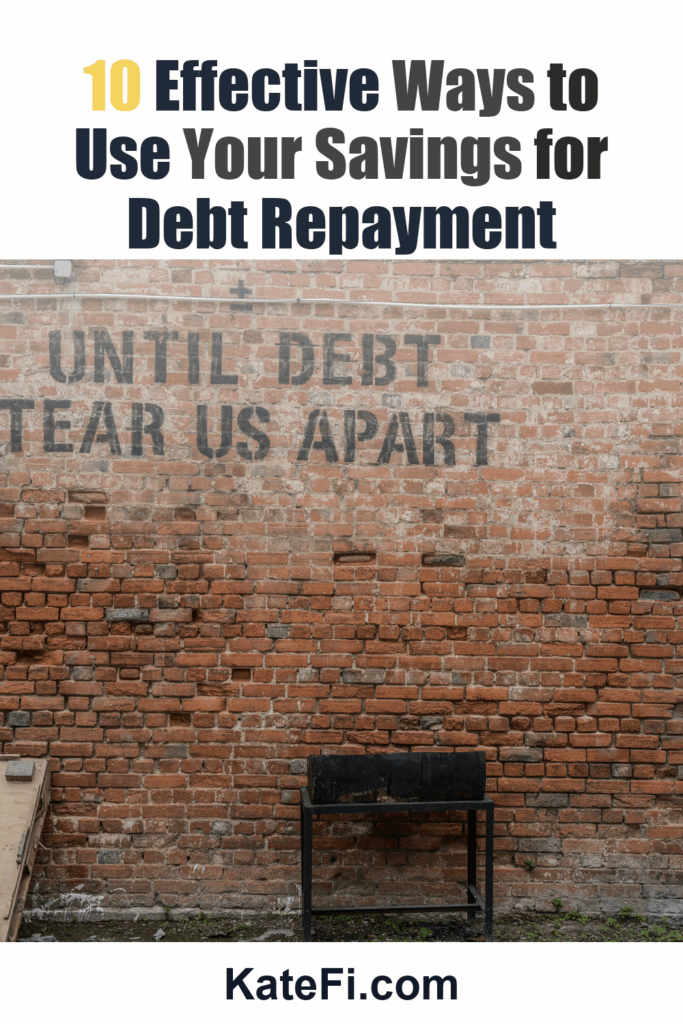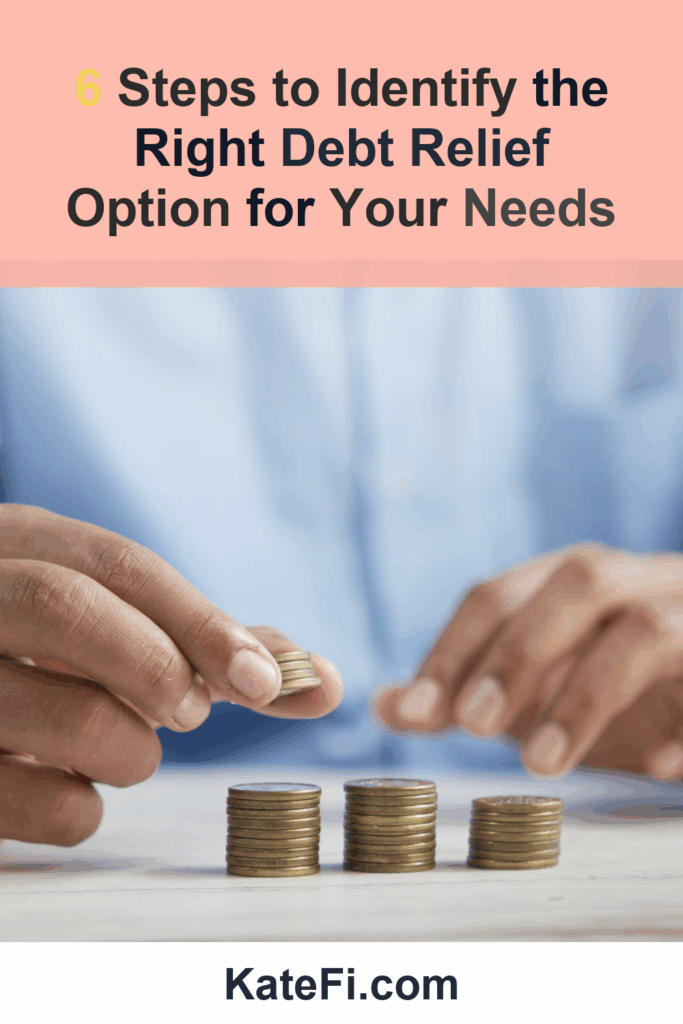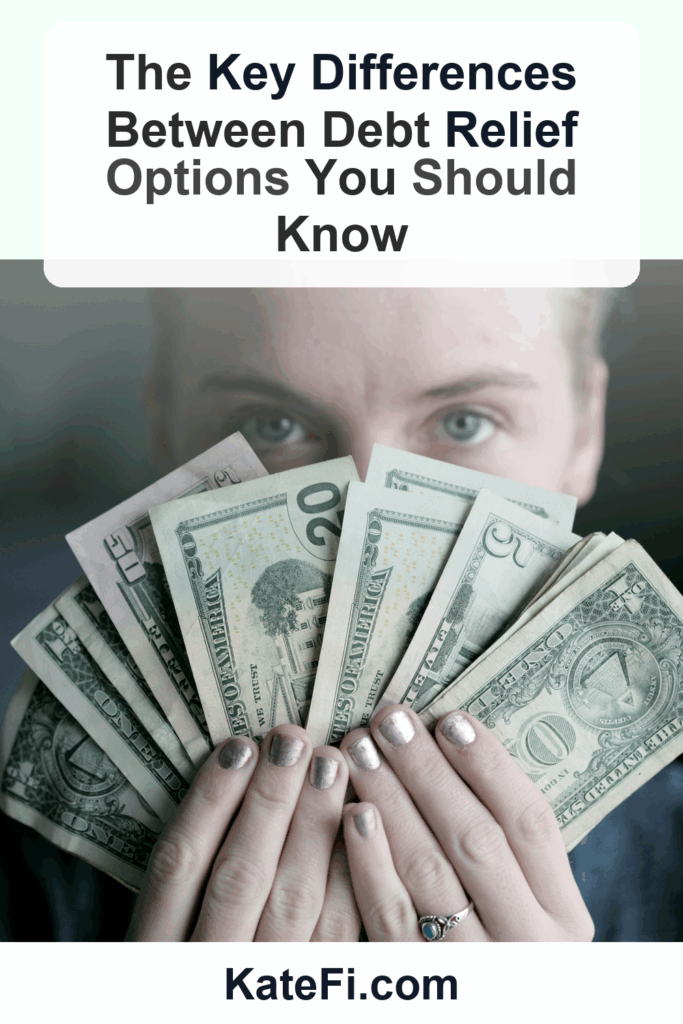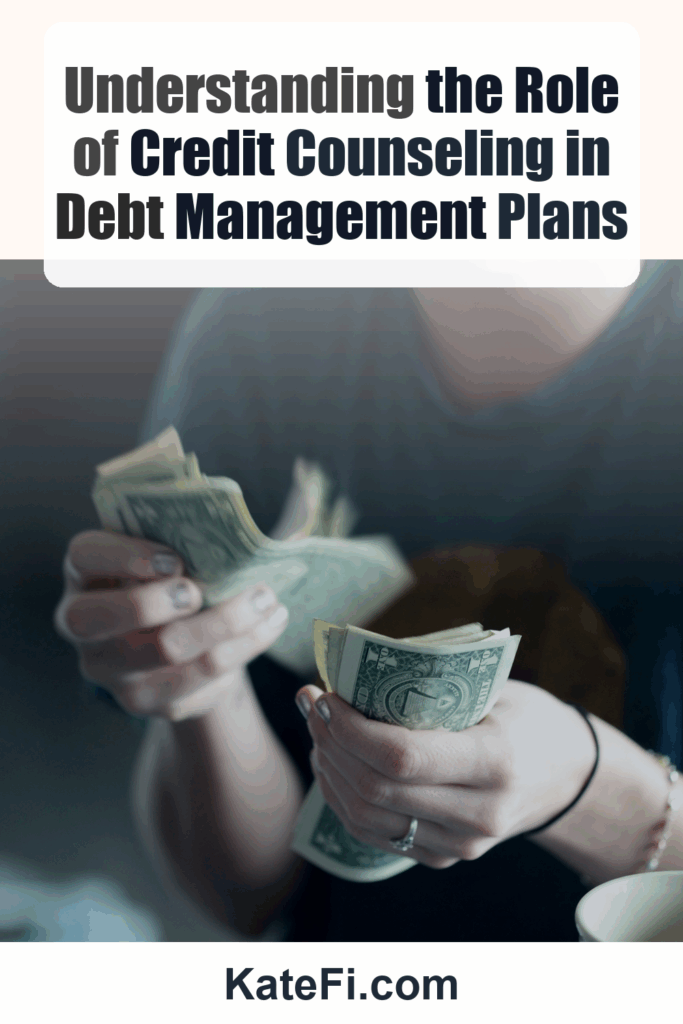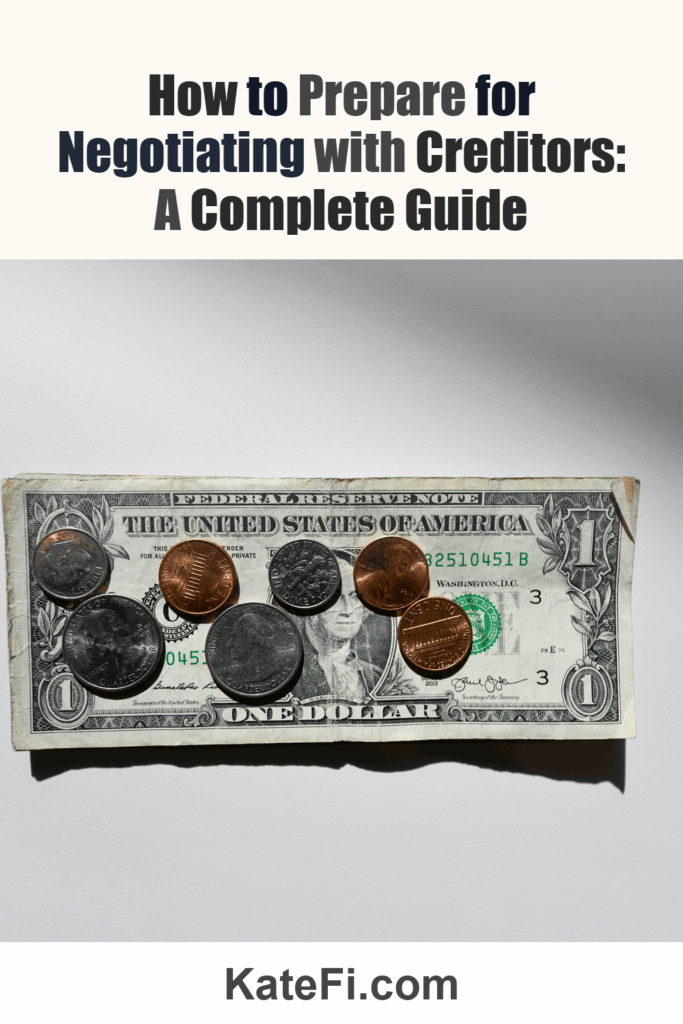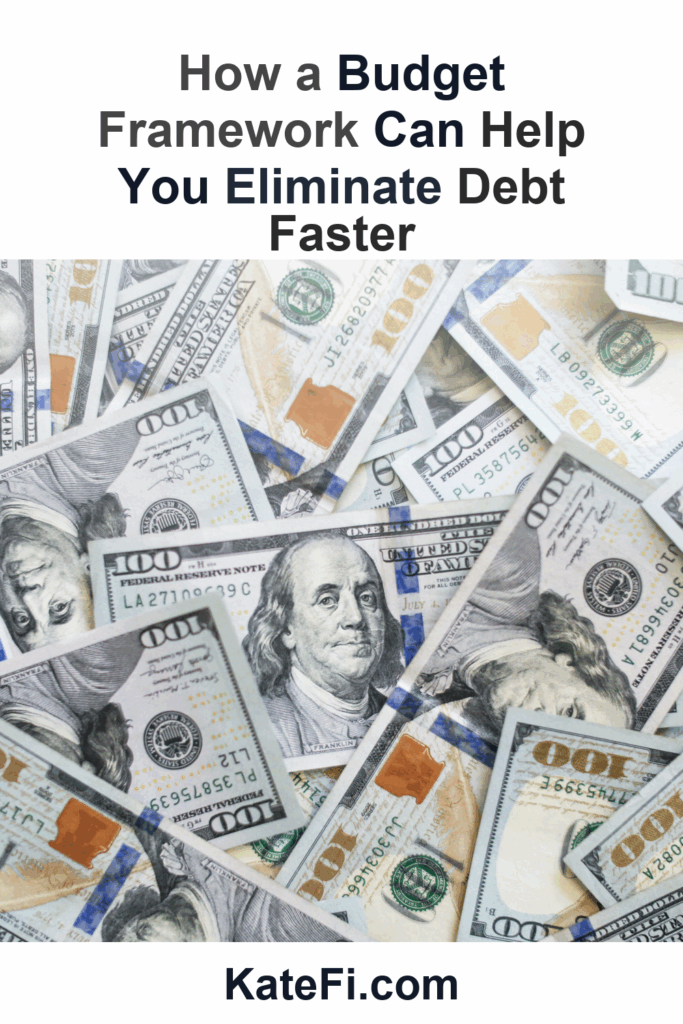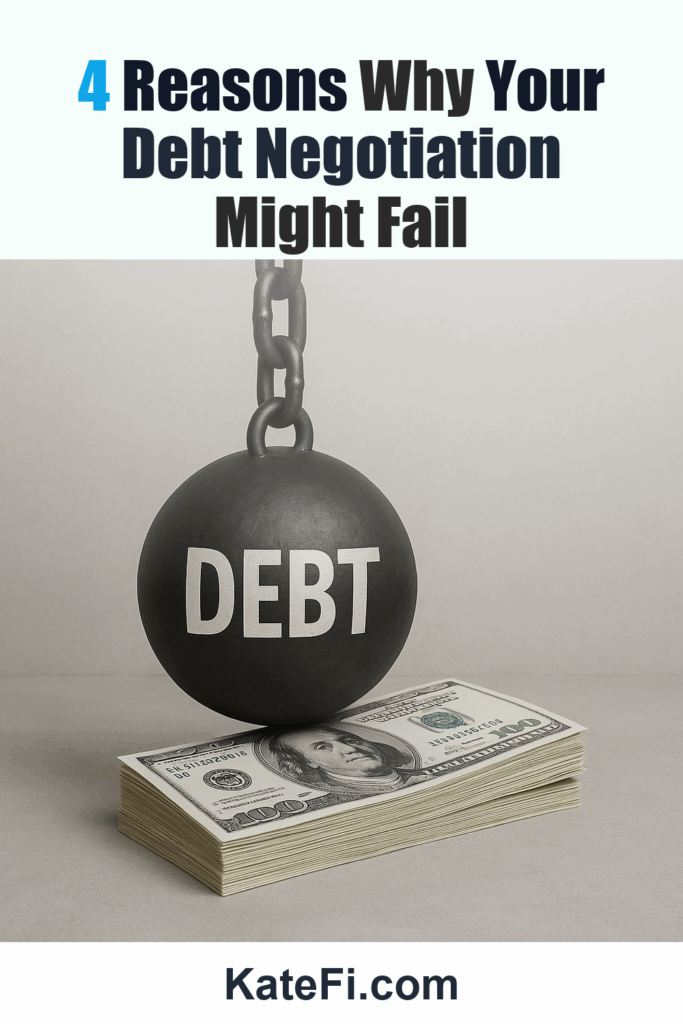9 Practical Steps to Pay Off $5,000 in Credit Card Debt in 6 Months
The rising cost of living and persistent inflation have made managing household budgets increasingly challenging. For many, credit card debt has become an inevitable consequence of trying to maintain a semblance of financial stability. As of 2023, the average American household carries a credit card balance of around $5,700. If you’re among those grappling with this burden, you might feel overwhelmed by the thought of paying off $5,000 in credit card debt within just six months. However, with a strategic approach, it’s not only possible but also achievable through side-income micro-wins that can help accelerate your payoff journey.
Love our content? Show your support by following us — pretty please!🥺
FOLLOW ON PINTEREST
Hi! I’m Kate, the face behind KateFi.com—a blog all about making life easier and more affordable.
Let’s dive into nine practical steps you can take today to tackle that credit card debt head-on, while also highlighting the benefits of a free consultation through KateFi to explore your options for debt relief.
1. Assess Your Financial Situation
What You’ll Learn on the Call
- Estimated timeline and monthly payment range
- How credit may be affected in the short term
- What documents to gather to move faster
Not available in IL, KS, OR, TN, UT, WV.
Before you can conquer your credit card debt, you need to understand your financial landscape. Take stock of your income, monthly expenses, and existing debts. A simple budget can go a long way in helping you pinpoint areas where you can cut back.
Checklist to Assess Your Finances:
- Gather all credit card statements
- List monthly income sources
- Record all essential and discretionary expenses
- Calculate total debts and minimum payments required
This detailed overview will help you see how much you can allocate toward your credit card payments each month. Moreover, it sets the stage for any discussions you might have when you
✅ See If You Qualify for Debt Relief
.
2. Set a Target Payment Plan
Understand pros/cons of settlement vs consolidation vs DMP for your exact mix of debts.
Not available in IL, KS, OR, TN, UT, WV.
To pay off $5,000 in six months, you’ll need to pay approximately $834 each month. However, consider using the snowball or avalanche methods for maximum effectiveness. The snowball method emphasizes paying off the smallest debt first, while the avalanche method focuses on the highest interest debt.
Example Payment Plans:
| Payment Method | Monthly Payment | Total Interest Paid |
|---|---|---|
| Snowball | $834 | Lower |
| Avalanche | $834 | Higher |
Choose the method that aligns with your personality and financial goals. You may find motivation in quickly eliminating smaller debts or saving money by tackling high-interest debts first.
3. Explore Side-Income Opportunities
Lower Your Unsecured Debt
If you have $5,000+ in credit card or personal loan debt, a free consult can review options like settlement or hardship plans.
- One-on-one call to review your debts and goals
- See potential monthly payment reductions
- No obligation to enroll
Not available in IL, KS, OR, TN, UT, WV.
To reach that $834 monthly target, consider diversifying your income through side gigs. Side income can help ease the financial strain while simultaneously accelerating your debt payoff. Here are a few ideas for side income:
- Freelance Work: Utilize your skills in writing, graphic design, or programming on platforms like Upwork or Fiverr.
- Rideshare or Delivery Services: Drive for Uber, Lyft, or food delivery apps like DoorDash to make extra cash on weekends.
- Online Tutoring: Offer your expertise in a subject you’re passionate about through tutoring websites.
- Sell Unused Items: Declutter your home and sell items on eBay, Facebook Marketplace, or Craigslist.
Every little bit counts! Micro-wins from these side hustles can quickly add up to your monthly payment.
✅ See If You Qualify for Debt Relief
4. Cut Unnecessary Expenses
While bringing in more income is essential, reducing your outgoings can significantly impact your ability to pay off your debt. Look for non-essential spending areas you can temporarily minimize or eliminate.
Checklist for Cutting Expenses:
- Review subscription services (Netflix, gym memberships, etc.)
- Limit dining out and coffee runs
- Cancel any unused services (streaming, magazines)
- Seek cheaper alternatives for groceries (store brands, meal planning)
This mindful spending can redirect those funds into your debt payment.
5. Negotiate Your Credit Card Interest Rates
Many credit card companies are willing to work with customers to keep their business, especially if you have been a loyal customer. Call your credit card company and inquire about lowering your interest rate. You might be surprised at their willingness to negotiate.
Script for Negotiation:
- “Hello, my name is [Your Name]. I’ve been a customer for [X years], and I’m looking to lower my interest rate due to my consistent payments. Is there any way we could discuss this?”
If successful, this could reduce the amount of interest you pay and accelerate your debt repayment.
6. Consider a Debt Consolidation Loan
If you’re feeling overwhelmed by multiple credit card payments, consolidating your debt into a single loan can simplify your finances and potentially lower your interest rates. Many banks and credit unions offer debt consolidation loans that can be beneficial.
However, it’s essential to fully understand the terms of the loan and ensure that it truly provides a better financial situation than your current credit card debt.
✅ See If You Qualify for Debt Relief
7. Use Windfalls Wisely
Tax refunds, bonuses, or monetary gifts should be viewed as opportunities to eliminate debt. While it may be tempting to spend this windfall, consider allocating a substantial portion—if not all—toward your credit card payments.
Tracking your debt as it decreases can serve as a motivational tool.
Practical Tip: Create a separate savings account for any windfalls you receive, specifically earmarked for debt repayment.
8. Monitor Your Progress
Set milestones throughout your debt repayment journey. Celebrating small victories can help maintain your motivation. Use a spreadsheet or app to track your progress.
Checklist for Monitoring Progress:
- Monthly updates on debt totals
- Celebrate every $1,000 paid off
- Adjust your budget and income strategies as needed
By tracking your success, you’re more likely to stay committed to your goal.
9. Consider Professional Help
If you’re feeling overwhelmed, don’t hesitate to seek professional help. A free consultation with a debt relief specialist from KateFi can help you explore various options tailored to your situation. Specialists can provide insight into debt management programs, consolidation loans, and other financial solutions.
✅ See If You Qualify for Debt Relief
Understanding Credit Impact and Document Preparation
Before starting your debt relief journey, it’s important to understand how these options can impact your credit. Debt relief solutions may affect your credit score negatively initially but can lead to improved credit health in the long run by lowering your debt-to-income ratio.
To prepare for a consultation or application process, gather the following documents:
- Recent credit card statements
- Pay stubs or income verification
- Documentation of other debts (personal loans, medical bills)
- A current budget
Having these documents handy will facilitate a faster review of your situation.
Important: This content is for education only—not legal, tax, or financial advice. Results and eligible programs vary by situation and state. Fees apply if you enroll and complete a program. Debt relief can affect credit; missed payments may lead to collections/lawsuits. Not available in IL, KS, OR, TN, UT, WV.
In conclusion, while the prospect of paying off $5,000 in credit card debt in six months might seem daunting, it is possible with discipline, strategic planning, and a little ingenuity. Each step you take—be it cutting expenses, generating side income, or seeking professional guidance—can propel you closer to financial freedom. So take action today! Whether you start by implementing these strategies or reach out to KateFi for a consultation, your journey toward debt relief can begin now.




